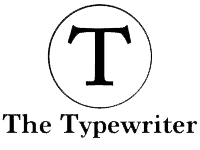Peace agreements and democracy promised a whole new world for Guatemala. Freedom, employment, justice and peace became slogans in every political speech. Unfortunately, these promises for peace were broken, with poverty, illiteracy, violence and unemployment rates increasing dramatically. Yet the most worrying trend is the increasing number of social conflicts.
A 2013 United Nations Educational, Scientific, and Cultural Organisation (UNESCO) report indicated that Guatemala has sixteen unresolved social conflicts. These conflicts have presented complex situations involving industries such as mining, hydroelectric power, land tenure, human rights, companies’ interests and the role of social movements.
Trying to solve social conflicts?
In a democratic regime it would be logical to think that the common wealth takes precedence over private wealth. However, in Guatemala this logic is not always applied. In other words, the Guatemalan state has used extreme force to repress citizens that demonstrate against mining and hydroelectric industries. In the ‘San Rafael Las Flores’ mining conflict between April and May 2013, the state used extreme violence and military measures to control and minimise the non-violent protests.
They deployed more than 500 policemen and 350 soldiers for a community populated by less than 2,500 people. As a result, one communal leader was murdered, sixteen individuals were put in prison -without any specific charge- and continual death threats have led to several communal leaders fleeing their homes. A ‘State of Siege’ was declared under the facade that the government was going to face drug cartels in the zone.
The State acted in a similar fashion during the ‘Santa Cruz Barrillas’ conflict in May 2012. Community inquiries about the hydroelectric plant operating in their area again led to a declaration of a State of Siege, ending in the murder of one leader, the wounding of two more and the imprisonment of twelve citizens without charge. The United Nations Human Rights Commission demanded protection for the community members. Even with the UN involvement, the state justified its actions by claiming ‘these people [referring to the communities] are not allowing the nation to develop’.
The San Rafael Las Flores and Santa Cruz Barrillas social conflicts are not the only exceptions to the rule. Both demonstrate the pattern of state behaviour in managing conflicts. The Guatemalan state is not protecting human rights or common wealth. It focuses to protect companies’ interests. In some cases, the state allows companies to use force and violence against civilians that are opposing said company’s activities. For example, during the San Rafael Las Flores conflict, one communal leader was killed by the company´s security forces, yet there has been no progress in the investigation of the case. Citizens have unwillingly accepted that this will be just another murder forgiven by the courts.
Social conflicts prove that Guatemalan peace agreements were just thousands of words forgotten in some bureaucratic drawer. The peace agreements were not enough to build a state that defends people rights. Even worse, the latest trend in these social conflict demonstrates the re-militarisation of a forgotten promise- a democratic Guatemala.
For more information visit:
- Justice and Corporate Accountability Project (JCAP) – MiningWatch Canada-. Solicitan investigar vínculos entre minera Tahoe y hecho violentos.
- El Informante. En Guatemala se hace lo que el sector empresarial diga, dice Oquelí en Madrid.
- Comisión Pastoral Paz y Ecología en Guatemala. Informe científico revela contaminación en rio cerca de Mina Marlín.
- UNESCO: Informe Situacion De Los Derechos Humanos En Guatemala En 2011 Y 2011 (The Human Rights Situation in Guatemala in 2011-2012).
